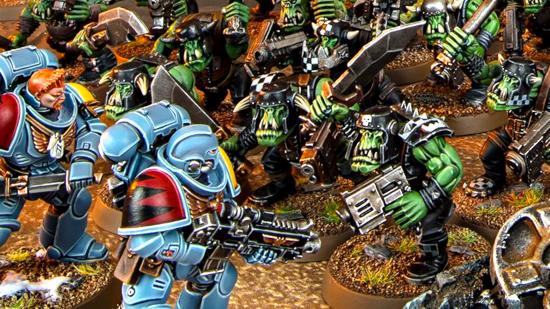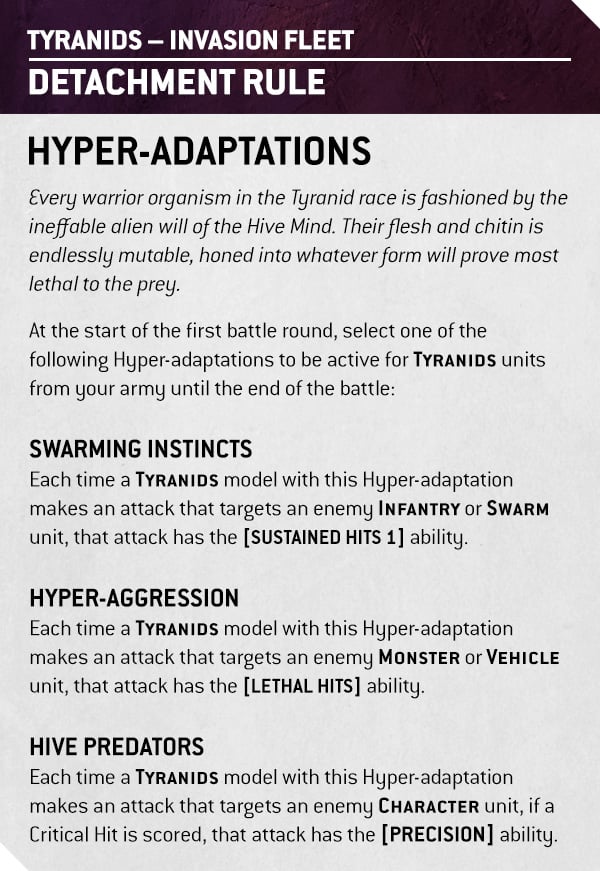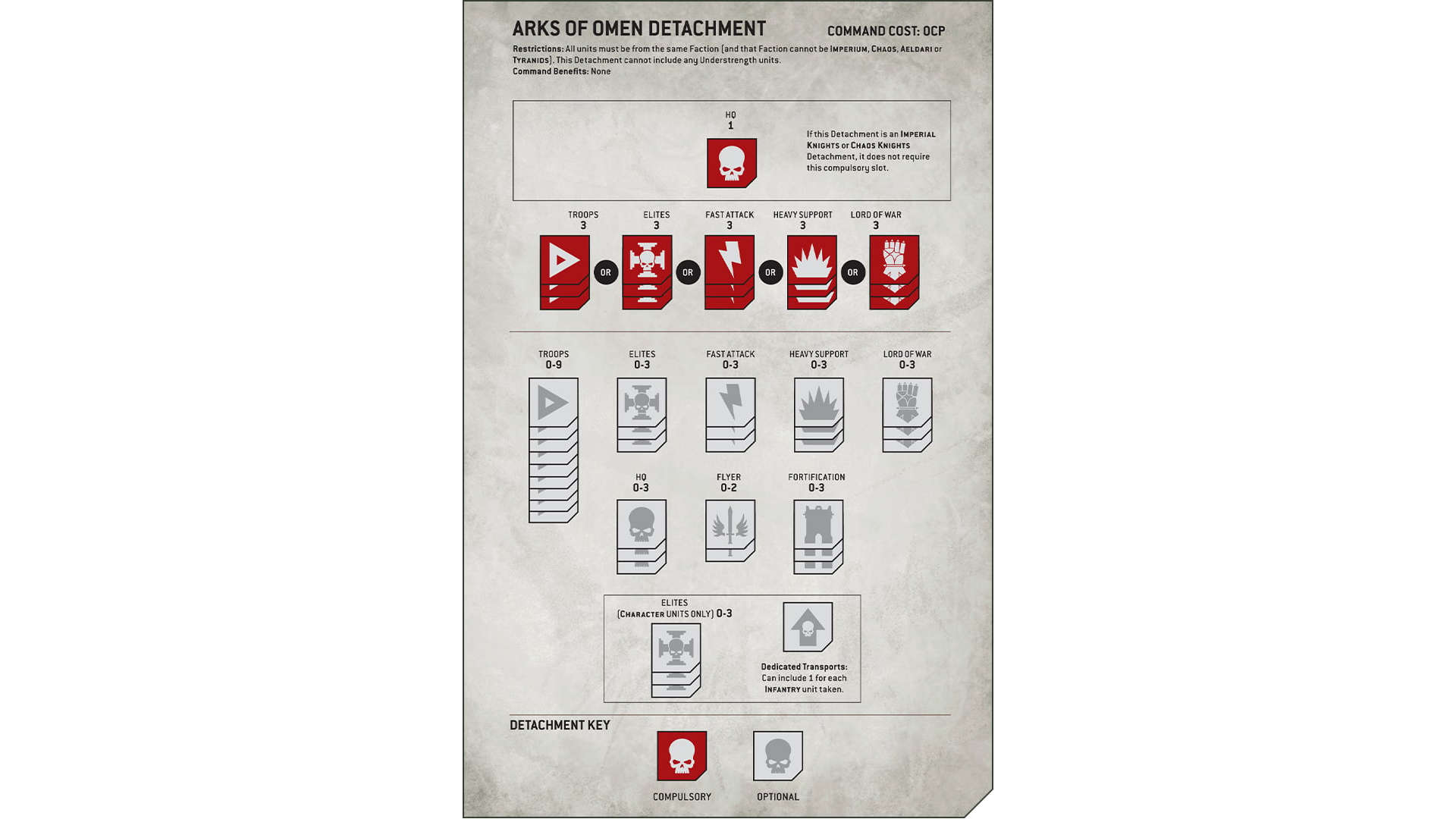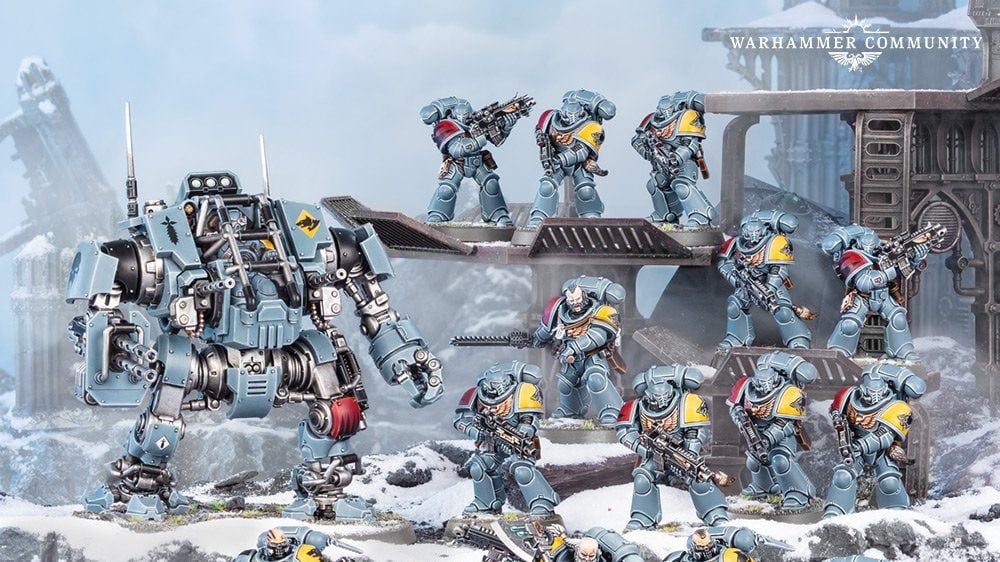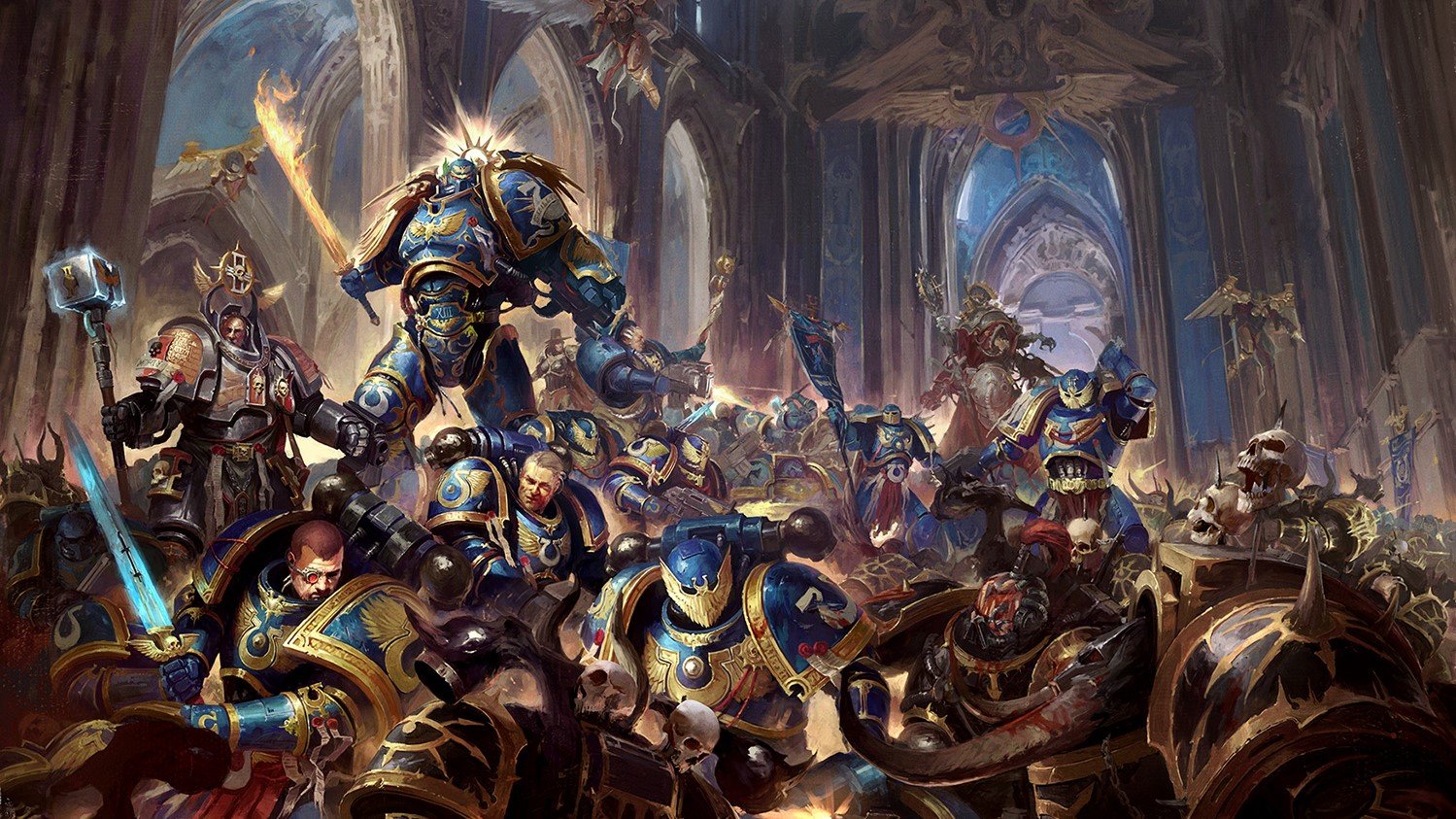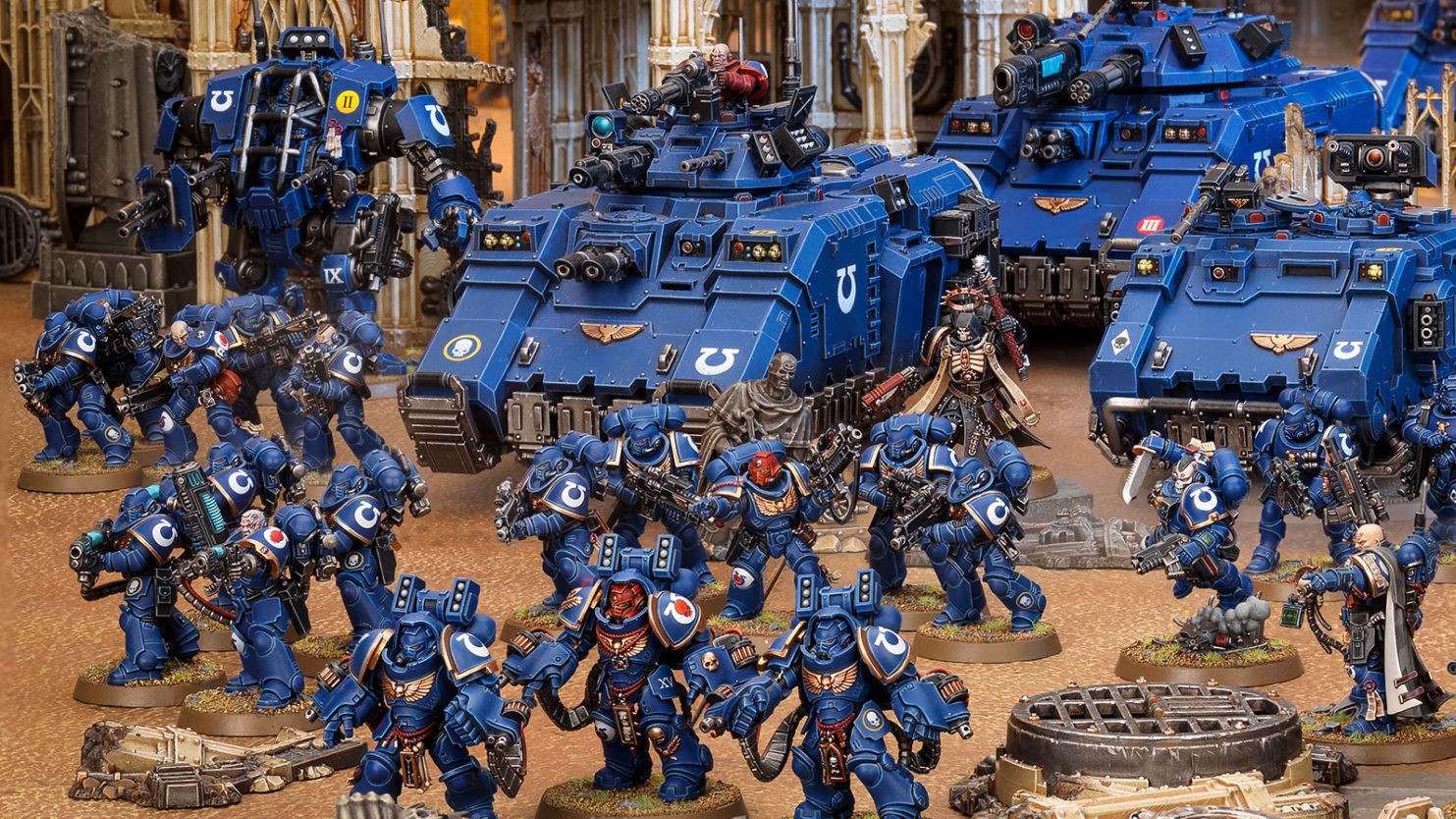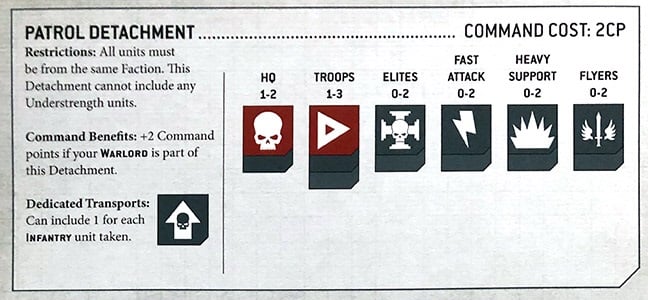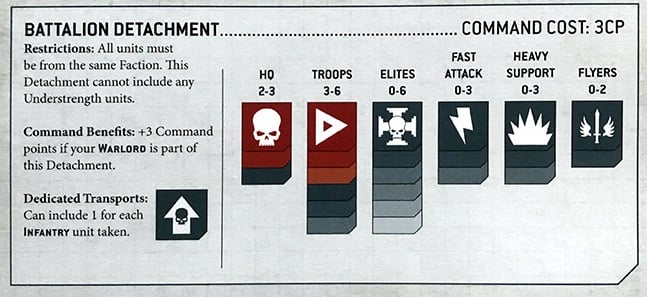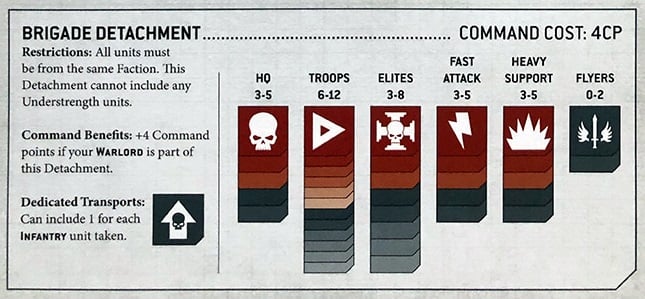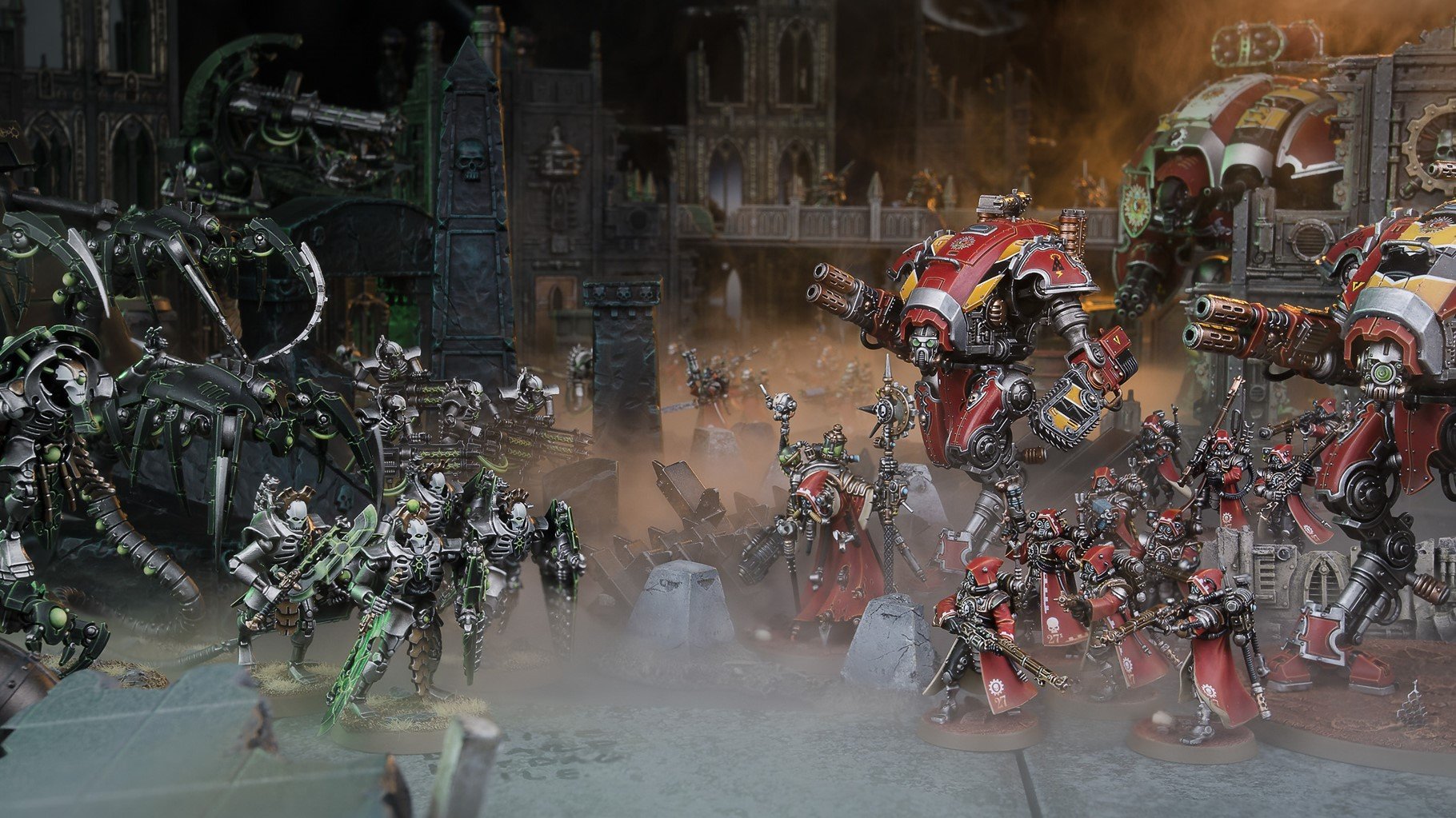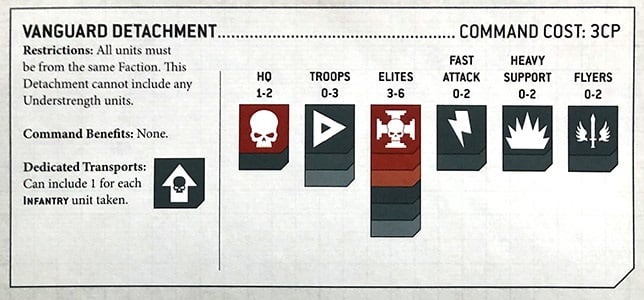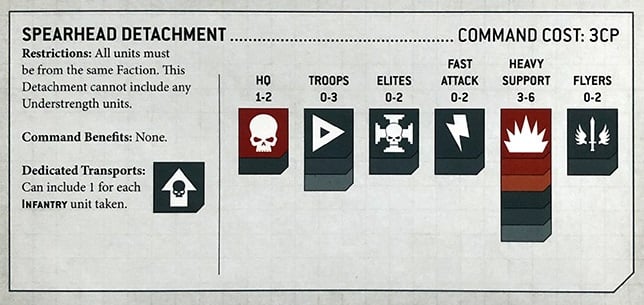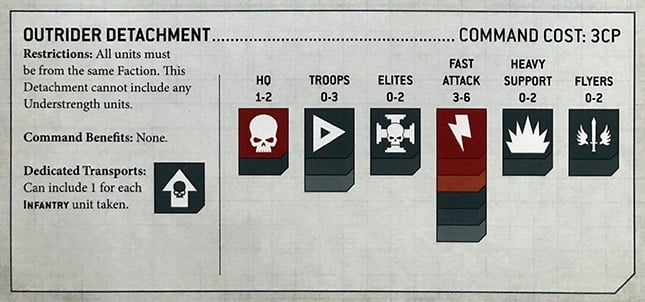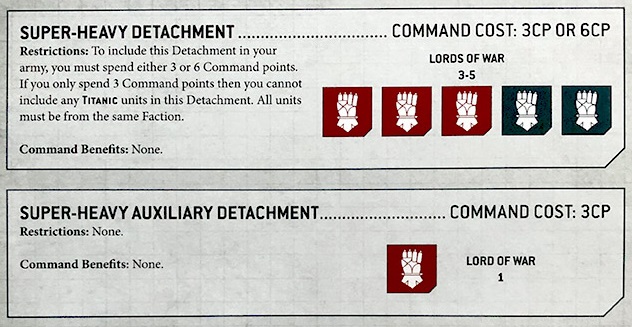Warhammer 40k detachments are the essential, rules-mandated building blocks of a ‘battle-forged’ army – that is, one that’s properly structured and rules-legal for balanced play in most of the game’s formats.
Detachments have been around for many editions of the game, and their role has changed to reflect how the game designers think your armies should be organised. That’s about to change again in Warhammer 40k 10th edition.
Warhammer 40k 10th edition Detachments
In Warhammer 40k 10th edition Detachments provide your force with several bonuses: an army-wide special rule, a set of 40k Stratagems, and ‘enhancements’ you can use to upgrade specific models or units in you forcer. Your whole army is considered to be part of this Detachment – you can’t build a force containing more than one Detachment.
None of the current Detachments provide bonuses for Allied units.
10th edition launched with free datasheets and a single Detachment for each Warhammer 40k faction. The Tyranids detachments revealed so far all provide bonuses to units with specific keywords, encouraging you to build your army in a particular way.
Future Detachments may place restrictions on the kinds of models you can include in your army, similar to the Armies of Renown from 9th edition. Expect new Detachments to appear in future Warhammer 40k codex books.
Adeptus Custodes Detachments
| Detachment | Source | Restrictions |
| Shield Host | Index | None |
Adeptus Mechanicus Detachments
| Detachment | Source | Preferred units |
| Rad-Zone Corps | Index / Codex | None |
| Skitarii Hunter Cohort | Codex | Skitarii |
| Data Psalm Conclave | Codex | Cult Mechanicus |
| Explorator Maniple | Codex | Transports |
| Cohort Cybernetica | Codex | Legio Cybernetica, Vehicles |
Aeldari Detachments
| Detachment | Source | Restrictions |
| Battle Host | Index | None |
Adepta Sororitas Detachments
| Detachment | Source | Restrictions |
| Hallowed Martyrs | Index | None |
Astra Militarum Detachments
| Detachment | Source | Restrictions |
| Combined Regiment | Index | None |
Black Templars Detachments
| Detachment | Source | Restrictions |
| Righteous Crusaders | Index | None |
Blood Angels Detachments
| Detachment | Source | Restrictions |
| Sons of Sanguinius | Index | None |
Chaos Daemons Detachments
| Detachment | Source | Restrictions |
| Daemonic Incursion | Index | None |
Chaos Knights Detachments
| Detachment | Source | Restrictions |
| Traitoris Lance | Index | None |
Chaos Space Marines Detachments
| Detachment | Source | Restrictions |
| Slaves to Darkness | Index | None |
Dark Angels Detachments
| Detachment | Source | Restrictions |
| Unforgiven Task Force | Index | None |
Death Guard Detachments
| Detachment | Source | Restrictions |
| Plague Company | Index | None |
Deathwatch Detachments
| Detachment | Source | Restrictions |
| Black Spear Task Force | Index | None |
Drukhari Detachments
| Detachment | Source | Restrictions |
| Realspace raiders | Index | None |
Genestealer Cults Detachments
| Detachment | Source | Restrictions |
| Ascension Day | Index | None |
Grey Knights Detachments
| Detachment | Source | Restrictions |
| Teleport Strike Force | Index | None |
Imperial Knights Detachments
| Detachment | Source | Restrictions |
| Noble Lance | Index | None |
Leagues of Votann Detachments
| Detachment | Source | Restrictions |
| Oathband | Index | None |
Orks Detachments
| Detachment | Source | Restrictions |
| Waaagh! Tribe | Index | None |
Necrons Detachments
| Detachment | Source | Preferred units |
| Awakened Dynasty | Index / Codex | Units led by Characters |
| Annihilation Legion | Codex | Destroyer Cult, Flayed Ones |
| Canoptek Court | Codex | Canoptek, Cryptek |
| Obeisance Phalanx | Codex | Overlord, Lychguard, Triarch |
| Hypercrypt Legion | Codex | Monoliths |
Space Marines Detachments
| Detachment | Source | Preferred units |
| Gladius Task Force | Index | All |
| 1st Company Task Force | Codex | Terminators and Veterans |
| Vanguard Spearhead | Codex | Phobos and Scouts |
| Stormlance Task Force | Codex | Mounted, some vehicles |
| Firestorm Assault Force | Codex | Units with Torrent weapons |
| Ironstorm Spearhead | Codex | Vehicles and Walkers |
| Anvil Siege Force | Codex | Units with Heavy weapons |
Space Wolves Detachments
| Detachment | Source | Restrictions |
| Champions of Russ | Index | None |
T’au Empire detachments
| Detachment | Source | Restrictions |
| Kauyon | Index | None |
Thousand Sons Detachments
| Detachment | Source | Restrictions |
| Cult of Magic | Index | None |
Tyranids Detachments
| Detachment | Source | Preferred units |
| Invasion Fleet | Index | All |
| Vanguard Onslaught | Codex | Vanguard Invader |
| Crusher Stampede | Codex | Monster |
| Assimilation Swarm | Codex | Harvester |
| Synaptic Nexus | Codex | Synapse |
| Unending Swarm | Codex | Endless Multitude |
World Eaters Detachments
| Detachment | Source | Restrictions |
| Berzerker Warband | Index | None |
Warhammer 40k 9th edition Detachments
In Warhammer 40k 9th Edition your army has to be ‘battle-forged’ to get access to Command Points and Stratagems. To achieve that, all of your units organised into neat and tidy Warhammer 40k detachments. Battle-forged armies are also required for matched play at official events and tournaments.
You can of course play without organising your models and units into detachments (known as an ‘unbound’ army) but generally, you won’t see this outside very casual play, or special events.
The rules below cover the basic principles of detachments and what you can do with them across all factions.
Warhammer 40k army building
With the release of Grand Tournament: Arks of Omen, there’s a big split between the rules in the core rulebook and the rules used in competitive play: we’ve noted how that changes things in this guide.
In 9th edition, you are allotted a budget of Command Points and detachments depending on the size of game you are playing – though there are always a few weird exceptions to 40k rules.
In the core rules, those limits are:
- Combat Patrol – 3 Command Points & 1 detachment
- Incursion – 6 Command Points & 2 detachments
- Strike Force – 12 Command Points & 3 detachments
- Onslaught – 18 Command Points & 4 detachments
You use the CP allotments above to purchase detachments for your army. Certain detachments will give you a rebate against their cost if you stick your general into them.
Players can earn CP via other means as well; for example, battle-forged armies generate 1 CP automatically per battle round. This helps to keep your tactical options open, even later in the game after your initial gambits have played out.
In Grand Tournament: Arks of Omen games you’re limited to these two levels:
- Incursion – games up to 1,000 points, 6 command points
- Strike Force – games up to 2,000 points, 6 command points
In GT Arks of Omen games you must uses a single Arks of Omen detachment.
Arks of Omen detachment rules
The Arks of Omen detachment costs no CP. It is also much, much more open than any of the normal detachments used in the base game.
You need to select a battlefield role, such as “Troops” or “Elites”, and take three units from that slot. You also need to take one HQ choice, unless you’re fielding Imperial Knights or Chaos Knights. Beyond that, you have incredible flexibility to pick units you like for the detachment – you could take three more Lords of War, or six additional Elites. You can take up to three additional Elites units beyond that limit, provided they’re characters.
Arks of Omen Allied detachments
GT Arks of Omen allows several armies to bring “battle brothers detachments” of thematically appropriate units. These use the same organisation charts as they do in the base rulebook, but cost no command points.
| Main force | Battle brothers | Allied detachment type |
| Imperium (may only pick one) | Agents of the Imperium | Auxiliary support or Patrol |
| Imperium | Imperial Knights Freeblade | Super-heavy auxiliary detachment |
| Imperium | Leagues of Votann | Patrol |
| Asuryani (Eldar) | Harlequin | Patrol |
| Drukhari | Harlequin | Patrol |
| Astra Militarum | Militarum Tempestus | Patrol |
| Genestealer Cults | Brood Brothers (Astra Militarum) | Patrol, Auxiliary Support, or Super-heavy Auxiliary Support |
| Chaos | Chaos Knight Dreadblade | Super-heavy Auxiliary Support |
| World Eaters | Khorne Daemons | Patrol |
| Thousand Sons | Tzeentch Daemons | Patrol |
| Death Guard | Nurgle Daemons | Patrol |
| Emperor’s Chidren | Slaanesh Daemons | Patrol |
| Other Chaos Space Marines | Chaos Daemons | Patrol |
| Disciples of Be’lakor Chaos Daemons Army of Renown (may pick both) | Chaos Space Marines | Patrol |
| Disciples of Be’lakor Chaos Daemons Army of Renown | House Korvax Chaos Knight | Super-heavy Auxiliary Support |
Warhammer 40k 9th edition detachments from the core rules
Each Warhammer 40k 9th edition detachment from the core rules costs a certain amount of CP to add to your army, though you’ll get a refund for the detachment containing your Warlord (or to another detachment, if you have a Supreme Command detachment).
| Detachment type | CP cost |
| Patrol | 2 |
| Battalion | 3 |
| Brigade | 4 |
| Vanguard | 3 |
| Spearhead | 3 |
| Outrider | 3 |
| Supreme Command | 0 |
| Super-Heavy | 3 or 6 |
| Super-Heavy Auxiliary | 3 |
| Fortification Network | 1 |
| Auxiliary Support | 2 |
Faction keywords
A key thing to remember when building armies for 40K 9th Edition, as in its predecessor, is that some of your units’ rules and abilities may depend on them being part of a detachment (or sometimes a whole army) composed entirely of units that share a given keyword in their rules.
All your detachments must share the same top-level faction keyword – such as [CHAOS] or [IMPERIUM] – to be able to be taken in the same army at all; a detachment of Space Marines can fight alongside a detachment of Sisters of Battle, but they would never make common cause with followers of Chaos.
But, beyond that, some units benefit from additional special abilities if they are part of a detachment – or, in some cases, a whole army – made entirely of units with a particular matching keyword, usually the keyword for the sub-faction they belong to.
For example, a battle-forged Space Marine army could contain one detachment of the Ultramarines Chapter and one of Black Templars – but it could not benefit from the Ultramarines special rule ‘Scions of Guilliman’ unless every detachment within the army was fully Ultramarines (or Ultramarines successors). Read the army rules in your codex carefully to make sure all your units and detachments have access to their snazziest abilities right off the bat.
These fiddly bits aside, though, let’s get into it:
Warhammer 40k detachments
At the time of writing, there are eleven types of detachments available for use when building a Battle-Forged army. You can use the links below to jump to your detachment of choice.
Three of these are considered ‘core’ detachments that serve as the backbone of most armies. These three contain essentially the same balance of unit types, just scaled up for use with larger game formats.
A ‘Patrol’ detachment is fine for the smaller Combat Patrol game type, but if you’re going up to Strike Force or Onslaught matches, you’ll probably want to build your list on one or more Battalion detachments instead – or even the mighty Brigade, if you’ve chosen a troops-heavy ‘horde’ type army like the Astra Militarum. The only real difference is the min-max numbers for units per category.
The defining trait of all three is that their CP costs are refunded if your Warlord happens to be in this detachment. This will allow you to use those points on another detachment (if applicable) or for various stratagems or other abilities that require CP to use.
Other than that, they all require that the units within the detachment be from the same faction, they all bar the use of under-strength units, and they all allow for you to take 1 dedicated transport for each ‘infantry’ unit in that detachment.
Patrol detachment
It’s worth noting that Combat Patrol format specifically requires you to take the ‘Patrol’ detachment as your sole choice. However, Imperial Knights & Chaos Knights can only go in Super-Heavy detachments. They can still take part in a Combat Patrol according to a foot-note in this article, however.
Battalion detachment
The most commonly-used detachment in the game and the first building block of maybe 70%+ lists. If you’re not using a Battalion in your army, ask yourself why not.
Brigade detachment
For use when one of your army’s principal battle strategies is “throw lightly-armed bodies at the enemy until either we win or we run out of bodies”. This technique is so fundamental to the strategic doctrines of the Astra Militarum that it inscribed into the medals of senior – [That’s enough of that now- Ed.]
The next three detachments types are a bit more specialist and offer a way to bring more of a specific unit type to your army, themed around a military strategy, whether that be a rapid reaction/strike force (Outrider) or perhaps an elite group of shock troopers (Vanguard).
Like the core detachment types above, units must be all from the same overall faction, and no under-strength units are allowed. You’re also allowed one dedicated transport per infantry unit again.
The key difference is that there’s no CP refund mechanic, regardless of whether your Warlord is present in this detachment or not. It’s not advised you stick your Warlord here, unless you’re wanting to run a specifically themed army.
A commonly-seen army structure is one battalion, supplemented by one of these specialist detachments, depending on the kind of playstyle or strategy the army is aiming for – be it taking and holding objectives with powerful elite troops, pounding enemies to dust with heavy firepower or encircling them with rapid, manoeuvrable assaults.
Vanguard detachment
The one with all the elites – load it up with Terminators, wind it up and watch it smash things.
Spearhead detachment
The one with all the heavy weapons – in 40k there is a saying: “Big guns never tire”. This is where you put your tanks, missile launchers and giant ramshackle scrap-metal energy cannons.
Outrider detachment
The one with all the fast-movers. Hulking gun-strapped motorcycles, floating jetbikes, green dudes with incredibly unstable-looking jetpacks, shoals of bat-winged alien monstrosities – they all live here.
Finally, there are currently five unique detachments that are very bespoke.
There are no unifying traits across these, as they each serve a very specific purpose. For example, if you want to bring some stationary armed buildings as part of your army, they’ll need to be in the Fortification Network detachment; mighty war engines such as Imperial Knights can only be deployed in a Super-Heavy detachment, and so on.
Supreme Command detachment
It’s worth noting this detachment is essentially only meant to be used if you’re fielding a major named character from your faction, like the Ultramarines’ Primarch Roboute Guilliman, or the newly-returned monarch of the Necrons, Szarekh the Silent King.
This was also in 8th edition, but the rules have been fixed to prevent exploitation. Also note: this detachment doesn’t come with a dedicated transport rule.
Your warlord MUST go in this detachment, but you still essentially get the CP cost refunded of one of your other core detachments, so you’re not losing out.
Super-Heavy detachment
For the big ‘uns. The Super-Heavy detachment is for building a complete list composed of super-heavy units (such as a Lance of Imperial Knights), while Auxiliary option is there to allow you to ‘ally in’ a single super-heavy unit to assist an army of foot-sloggers.
Fortification Network
Fortifications have had their ups and downs through successive editions of 40k, but have never really played a starring role in the game – whether it be the Star Wars-y floating, shielded platforms of the Tau or the suitably ridiculous, vehicle-repairing Mekboy Workshop that the Orks sometimes bring to battle. Still, maybe that’ll change with the Space Marines’ new Hammerfall Bunker. We’ll see.
Auxiliary Support detachment
If you really can’t find a way to fit a critical unit into one of your other detachments – or maybe if you’re at a tournament and have limited models with you to make necessary swaps – you can use the Auxiliary Support detachment to transplant in an extra unit, at a cost of 2 CP. Worth avoiding unless absolutely necessary.
That’s (hopefully) everything you’d want to know about detachments in Warhammer 40,000 9th edition. We’ll keep this guide update if any new information comes to light that needs inclusion.
